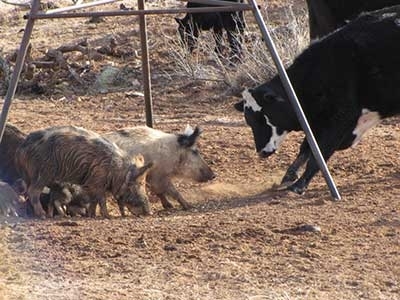NWRC Spotlight - Feral Swine Livestock Predation and Disease Transmission

Over the past 30 years, feral swine have expanded their range from 17 to 38 states in the United States. Their expansion has resulted in substantial costs to agricultural producers. In particular, feral swine impacts to livestock production include the spread of disease, predation on livestock, and effects on international trade.
NWRC economists collaborated with the USDA National Agricultural Statistics Service to survey more than 6,300 livestock producers in 13 states (Alabama, Arkansas, California, Florida, Georgia, Louisiana, Mississippi, Missouri, North Carolina, Oklahoma, South Carolina, Tennessee, and Texas) about feral swine damage. Findings indicate that predation and disease-related damage can be substantial in certain states and for certain types of livestock. In particular, damage to cattle operations in Texas and Arkansas was substantially higher than damage in other states and types of livestock operations. When extrapolated to livestock producers across the entire 13-state region, NWRC economists estimated that feral swine cause $40 million in livestock predation and disease damages each year. The findings from this survey will help guide feral swine control efforts and research, as well as serve as a benchmark against which the effectiveness of future control efforts are measured.
For more information, please contact nwrc@usda.gov.

